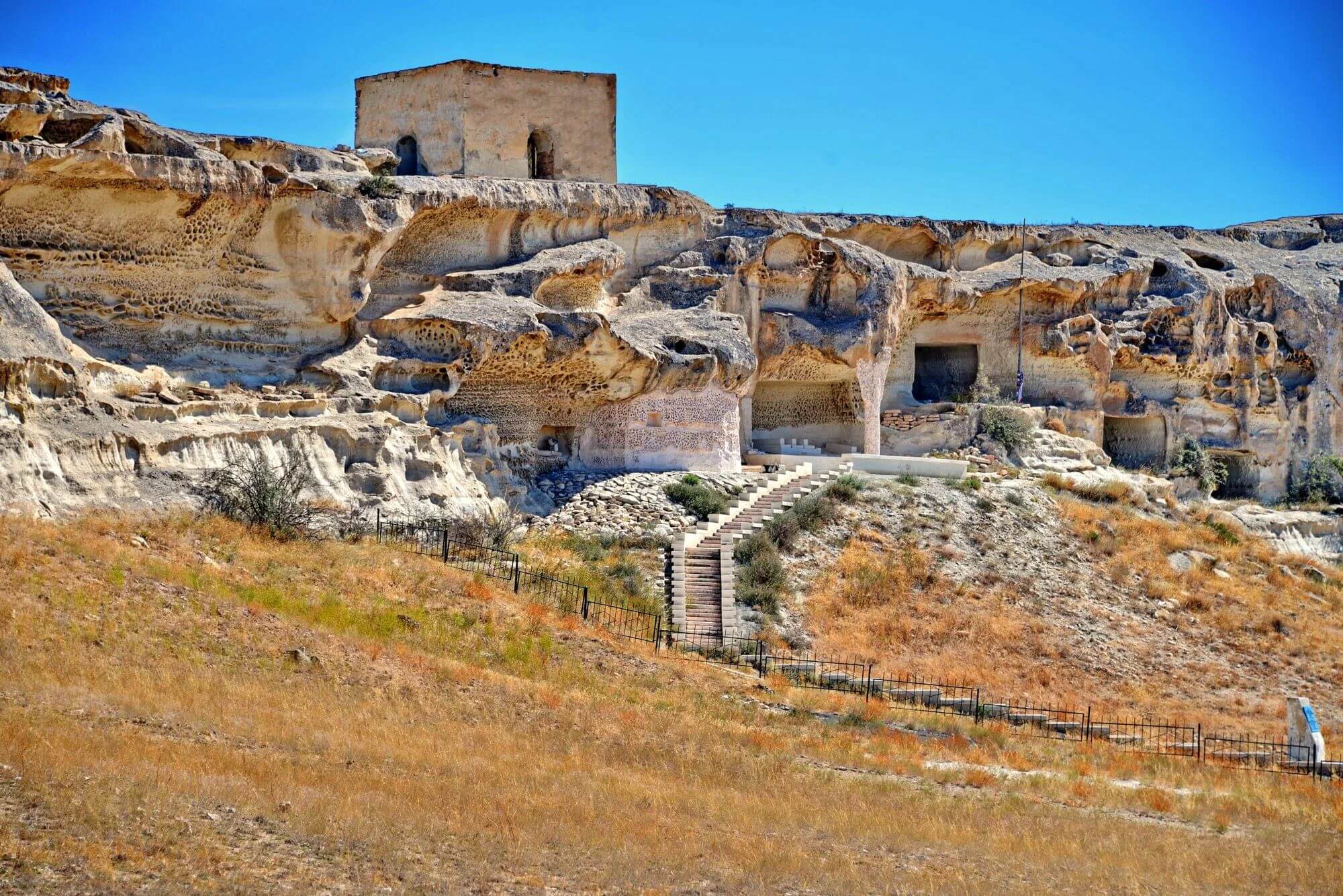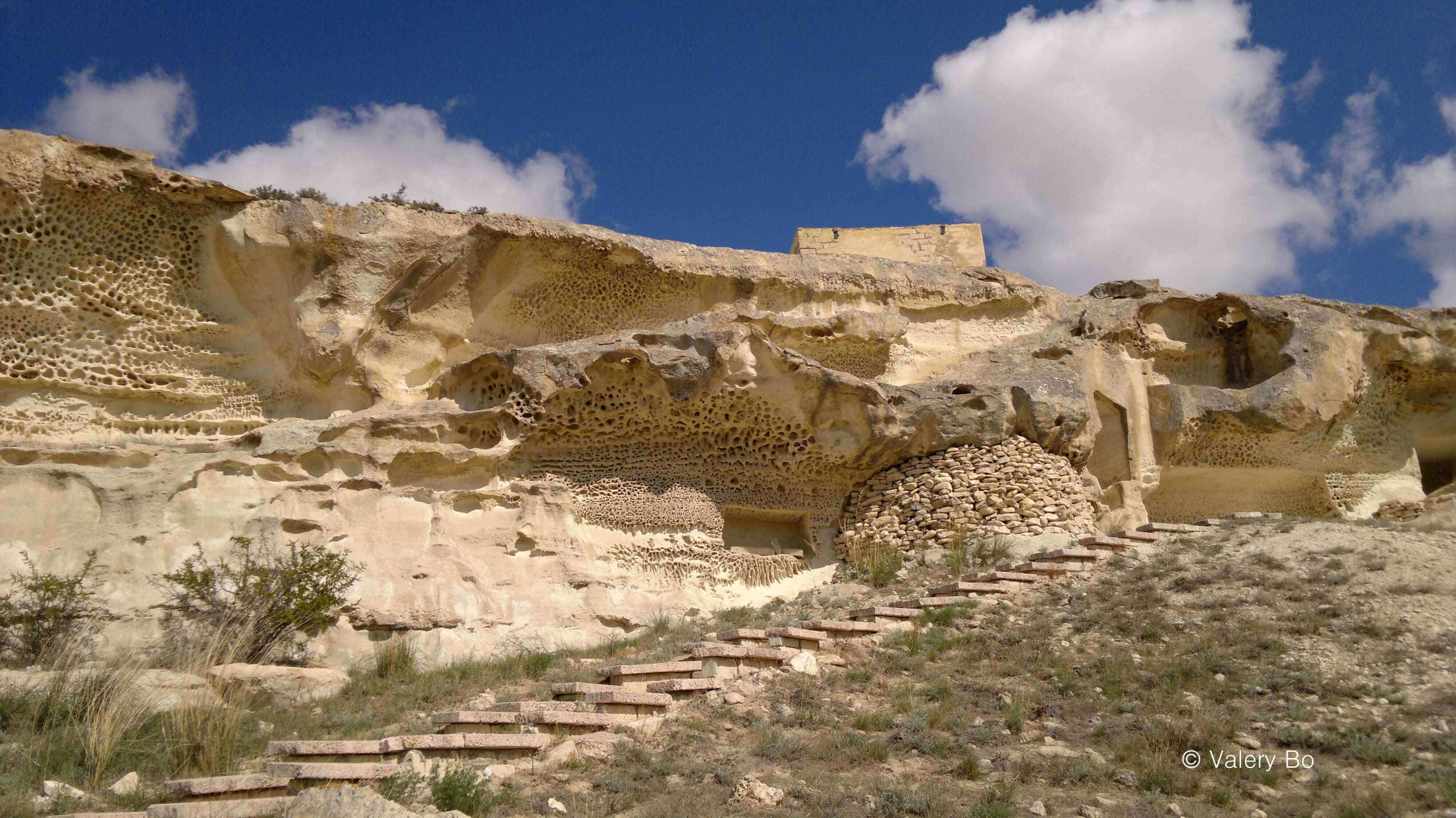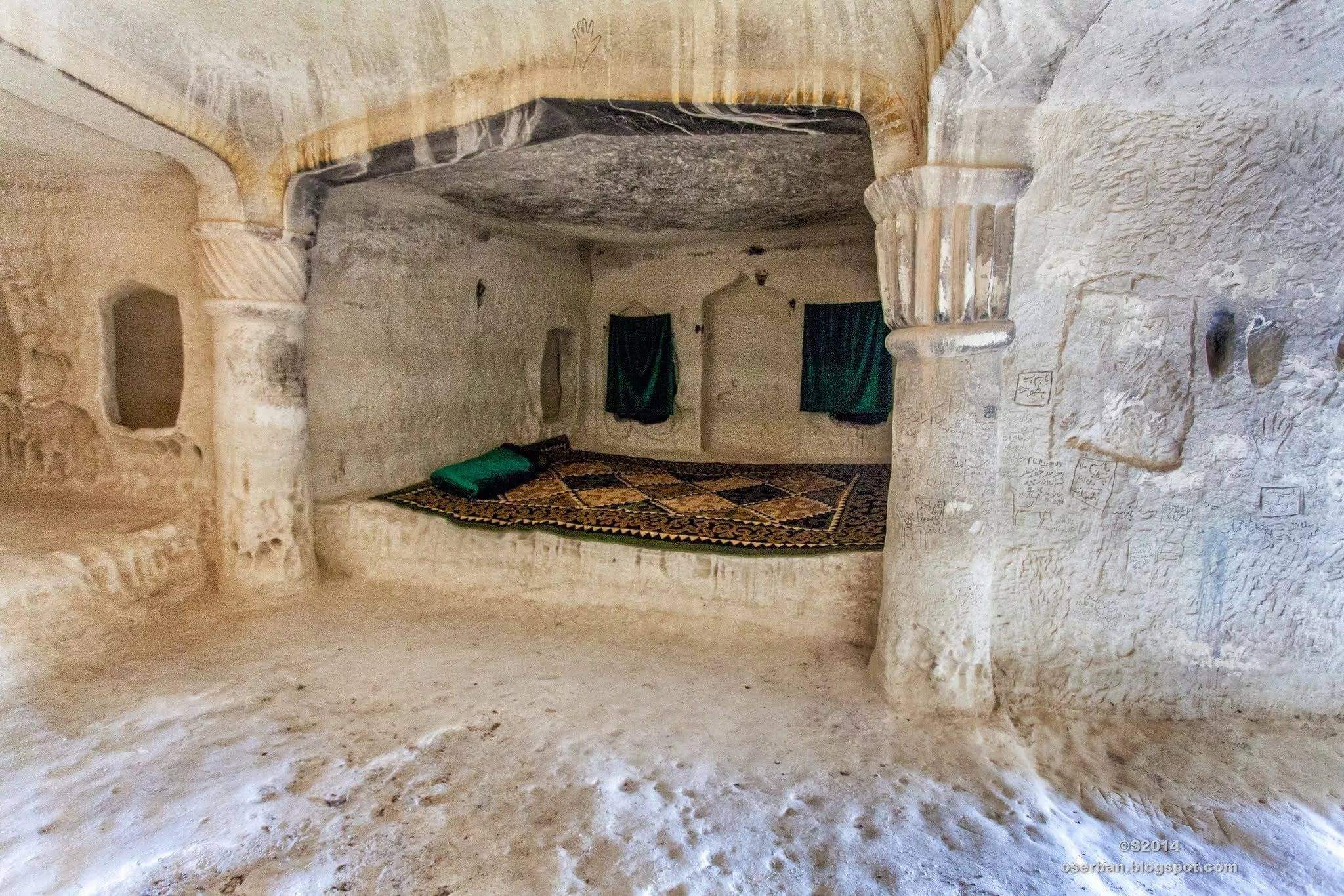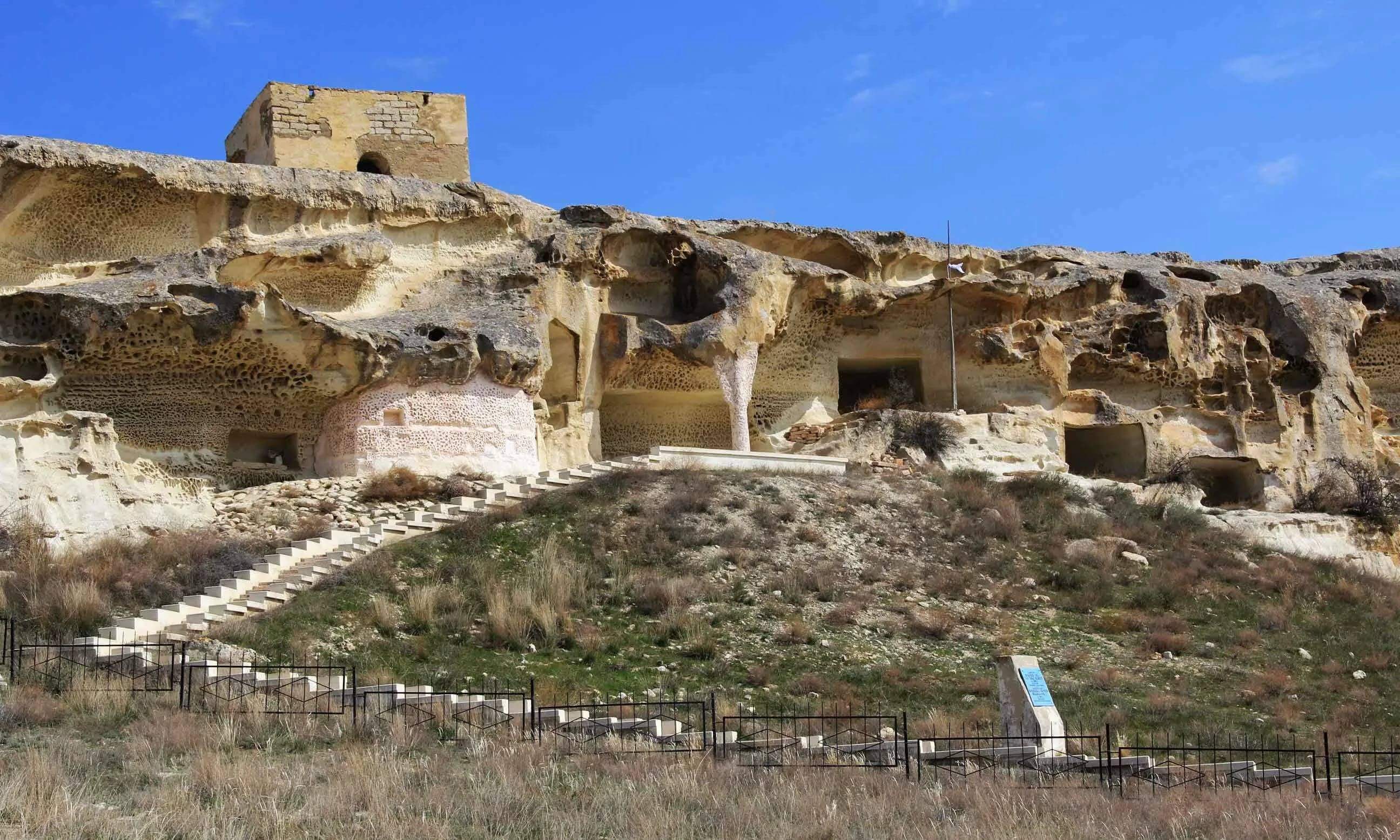Mysterious shrine carved in stone.
The Shakpak Ata underground mosque is one of the most mysterious and iconic places in Western Kazakhstan. The mosque is located in the north-east of the Tub-Karagan peninsula, along the slope of Ungazy Mountain. The structure itself is a masterpiece carved by human hands in a solid stone mass.

According to ancient local legends, once upon a time, the great healer Shakpak-ata lived inside this cave. Many people came to him for the healing of their souls and bodies from the nearby lands. Even after the death of the elder, people continued to come to the underground mosque so that the power of the healer would help them overcome the disease.
The decoration of the underground mosque amazes the imagination with its pure white color since all its premises were carved into the mass of chalk rocks. Because of this, every person who comes here immediately feels the unique atmosphere of the ancient shrine. The structure of the temple includes several one-of-a-kind halls. Joint passages combine each of which with the rest. Here you can also see an old stone spiral staircase that leads to a pavilion located on a flat section of rock. On the walls, one can see picturesque images from different eras, and the central part of the mosque and its vaults are decorated with Arabic script.

The entrance to the building is made in the form of a portal arch, not far from which the legendary architect carved wide niches for the burial of the deceased preachers. The human-made cave contains several rooms, also carved into a block of chalk. The main hall is crowned with strong monumental columns that support the majestic vault of the hall. In the central part of this vault, there is a light well, which is decorated with beautiful patterns. In the western part of the mosque, a mihrab niche and several small cells were arranged so that hermits could retire. Almost all the walls of the portal, rooms, and premises of the underground mosque, including niches for burials, are decorated with various inscriptions, images of horses, riders, prints of open palms, and different patterns on plant themes. Among all the inscriptions presented, one can especially single out an old Sufi poem about the transience of this world and the fact that a person's life is short. Also, in the cave, there are unique rock carvings of open palms. Traditional Islam strictly prohibits depicting people in the whole or any part of their bodies. Here in several places, you can find various drawings of a person's open palm. In ancient times, the image of a person's open palm was considered an important sacred Sufi symbol-amulet that protects people who come here, and the sacred places themselves from evil forces.

The burial place of the relics of the holy Sufi is still a mystery. Because of this, all burials are treated with special trepidation and care. Many scholars argue that the main purpose of the holy place is healing. Much indicates that the ministers of this sanctuary were members of the monastic order who were engaged in healing. Many legends have survived that were recorded by travelers of the nineteenth century. According to these ancient legends, mainly women who suffered from infertility came here. According to legend, the healing moonlight was used by the servants of the mosque for medical purposes, was of great importance in their healing. Sick men with various injuries and ailments also came to the mosque. Here they all found peace in their souls and were healed of their diseases. Underground mosques, carved into the ancient rocks of Mangystau, are revered as especially holy places. And the walls of these mosques are not just boulders, because they were ancient witnesses to the great deeds of the past.

The entrance to the Shakpak Ata underground mosque is free. It is open to visitors until sunset. Inside the cave, people are asked to keep quiet, especially when there are pilgrims in the mosque. It is recommended to visit the mosque in closed clothes and avoid short shorts and skirts, T-shirts, and off-the-shoulder dresses.
Despite such a remote location from Aktau, the mosque is often visited by tourists, believers, and pilgrims. Visitors are interested in the history and rich culture of this region. They come not only from Kazakhstan but also from all over the world.
The underground mosque is located in the western part of Kazakhstan, in the north-east of the Tub-Karagan peninsula. The nearest settlement to the mosque is the small village of Tauchik. It is about 45 kilometers from the mosque. The most convenient way to get to the mosque is by car or as part of a group of tourists by bus. In general, the journey will take about two hours.
Useful travel tips.
We recommend hiring a guide for your first trip.
If you are planning a long walk, we advise you to stock up on water and bring a hat.
You will need sunglasses both for a trip to the Shakpak-Ata mosque and if you decide to continue your way to the rest of the monuments of the Mangystau steppe.
Предыдущие статьи
Symbol of Strength and Freedom of the Spirit - Otpan Tau Modern historical monument
Духовный комплекс “Отпан тау” - это памятник старины под открытым небом. За…




